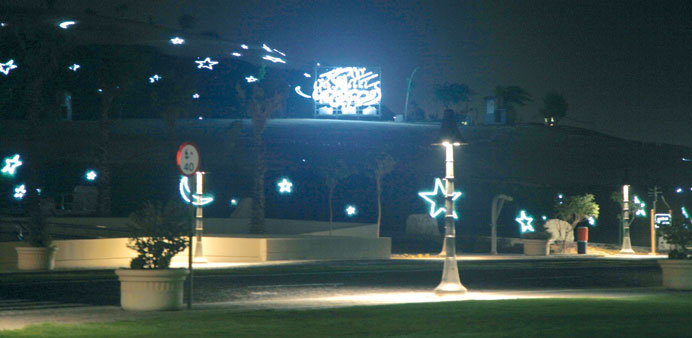Katara - the Cultural Village - has played host to a wide range of activities during the holy month of Ramadan, giving scores of Qatari and expatriate families the opportunity to enjoy the special atmosphere, especially in the evening.
The Ramadan festival of Katara was inspired by Arabic calligraphy and the Qur’an, with a “Shared Journey” exhibition featuring the prized collection of art collector Ibrahim Fakhroo.
The exhibition displayed the historical development of Arabic calligraphy through the unique pieces that Fakhroo has collected over the years. The exhibition runs until August 31 at Galleries 1 and 2 in Building 22. The expo is just one of a dozen exhibitions that revolve around the common theme of Arabic calligraphy.
Mohamed al-Kuwari, a visitor, said he and his family were thrilled by Katara’s Ramadan activities as they gave them a glimpse into Arabic calligraphy and the evolution of calligraphy in the Qur’an through the ages.
Another visitor, Khalid Saeed, felt that the events at Katara went beyond traditional calligraphy and displayed it in a dazzling form.
Katara also engaged a large number of people through social media by organising a competition called “Rally Paper”, in which people could win over 100 Iftar and Suhoor vouchers by answering questions via Facebook.
With a plethora of expos and events, Katara has played an important role in attracting people both locally and regionally, making it a major destination during Ramadan and Eid.
Khalifah al-Enizi, a Qatari, lauded the hospitality of Katara during Ramadan. For instance, Arabic coffee was offered to visitors accompanied by an overwhelming feeling of hospitality and generosity. “The entire Cultural Village has been decked up with lights that reflect the Ramadan atmosphere, attracting thousands of visitors throughout the season,” he said.
During the Ramadan festival, Katara hosted a series of fashion shows, presented by Qatari designers using clothes designed with Arabic calligraphy.
The fashion shows reflected the versatility of Qatari designers in using various forms and types of calligraphy styles that highlight the beauty and attractiveness of this Islamic art.
Meanwhile, five documentary films were screened at Katara in collaboration with the Al Jazeera documentary channel on themes related to Arabic calligraphy.
Most of the children’s workshops, too, revolved around the subject of Arabic calligraphy, supervised by world-class specialists. Katara also organised the second Qur’an memorising course for children. It included boys aged between five and 12 years (Katara Grand Mosque) and girls in the same age group (Golden Mosque).

The nights were full of fun at Katara during Ramadan.
